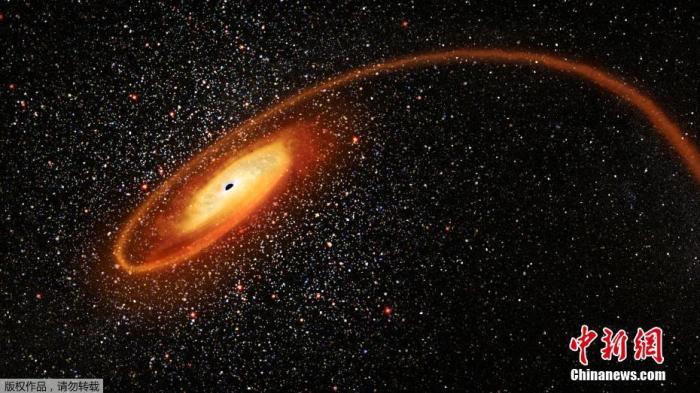China News Agency, Houston, September 2nd. Astronomers published research reports in "Physics Review Newsletter" and "Astrophysical Journal Newsletter" on the 2nd, stating that the discovery of a section of gravitational wave signals can prove the existence of intermediate-mass black holes.
According to CNN, astronomers said that the medium-mass black hole they discovered was about 142 times the mass of the sun.
According to a news released by the European Southern Observatory on April 16, astronomers used the European Southern Observatory's Very Large Telescope to observe for the first time a star orbiting a supermassive black hole in the center of the Milky Way, which is exactly in line with the prediction of Einstein's general theory of relativity.
The orbit of the star's motion is rosette-shaped, unlike the ellipse predicted by Newton's theory of gravity.
A black hole is a celestial body with a very small body and a huge mass.
According to different masses, they are generally divided into constant star black holes, medium-mass black holes and supermassive black holes.
So far, scientists have discovered many constant stars and supermassive black holes.
The medium-mass black hole is between the two, and the mass is 100 to 1000 times that of the sun.
So far, scientists have not found any evidence to prove their existence.
Astronomers said that on May 21, 2019, the American Laser Interference Gravitational Wave Observatory (LIGO) and the European Virgo Gravitational Wave Probe (Virgo) detected a weak signal: four twisted lines that lasted 1/10 second.
After measuring this signal through four different algorithms, astronomers believe that it may be a gravitational wave signal released during the formation of a medium-mass black hole about 7 billion years ago.
Astronomers believe that about 7 billion years ago, two black holes with masses of 66 times and 85 times that of the sun, they were very close, revolved around each other quickly, and finally collided together to form the aforementioned medium-mass black hole. , And released matter equivalent to 7 times the mass of the sun in the entire universe, and also produced ripples in the structure of the universe. Such ripples are gravitational waves.
On April 2, local time, the picture provided by NASA showed a live simulation picture of a star being torn apart by a black hole with tens of thousands of solar masses. The picture was magnificent.
The source of this gravitational wave was named GW190521.
According to a report by the American science and technology website "TheVerge", some researchers believe that this gravitational wave signal may not necessarily be generated when black holes merge.
The research report stated that although only a weak signal was captured, black hole merger is the simplest and most reasonable explanation for this signal.
Regarding this discovery, MIT astronomer Salvatore Vitale (Salvatore Vitale) said that the detection of this weak signal is very rare. Christopher Berry, a member of the LIGO Scientific Collaboration Editorial Board, said that this discovery helps to solve one of the biggest mysteries in astrophysics-how supermassive black holes are formed. (Finish)

